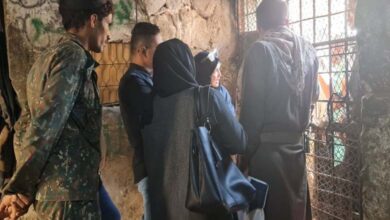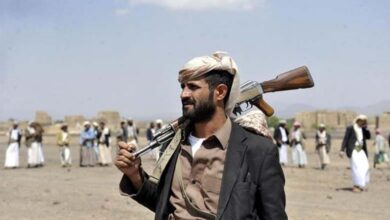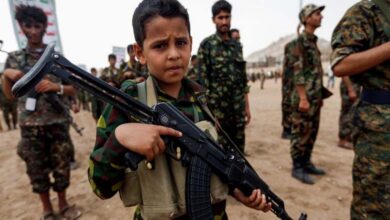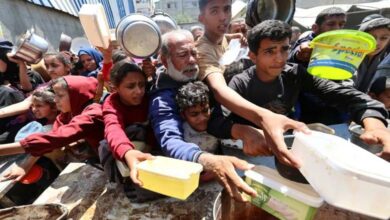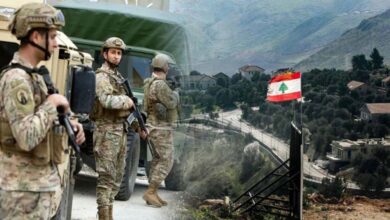Gaza Between the Tents of Hunger and the Shadow of 1948: Is Another Nakba Looming?
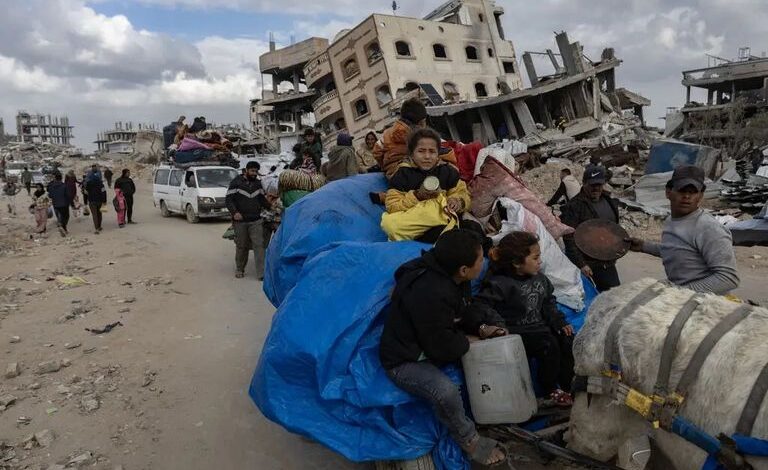
In Gaza, where the war has displaced nearly two million Palestinians, the specter of the “Nakba” looms larger than ever. Each bombardment destroys a neighborhood, each mass evacuation order reopens an old wound, drawing Palestinians back to the moment of their first loss of home.
-
Gaza Truce: Washington Delivers Principles of a Comprehensive Deal to Hamas via Israeli Mediator
-
Humanitarian zone in Khan Younis: evacuation southwards as Gaza operations expand
While Israel speaks of “temporary relocation” of civilians, survivors live with the suffocating fear that returning to their homes may not be possible this time, and that history is about to rewrite itself.
With nothing but a worn-out tent for shelter, weighed down by hunger, cold, and fear, 88-year-old Abdullah Abu Samra relives the scene he experienced more than seventy years ago: expulsion and exile. As a child, he fled his village in 1948. Now, watching his grandchildren scatter once again under bombardment in Gaza, he fears that history is repeating itself, only in an even harsher form.
-
Gaza War: 700 Days of Bombardments, Displacement, and Famine
-
Israel warns Gaza tower residents before targeting it and calls for evacuation of the city
He recalls how, at the age of ten in 1948, he was forced to leave his village, now inside Israel, along with hundreds of thousands of Palestinians displaced in what became known as the “Nakba.” Ever since, he has told the story countless times, each retelling focusing on new details so that his family would never forget, hoping that one day they could return. But recent weeks have made that hope feel more remote than ever.
On October 7, 2023, Hamas launched a surprise attack on Israel, killing around 1,200 people—mostly civilians, according to Israeli authorities—and taking about 250 hostages. Israel’s ensuing war on Gaza has killed tens of thousands, leaving behind generations of Palestinians uprooted, starving, and haunted by the fear they may never see their homes again.
-
Before the Battle to Invade Gaza… Israel Between Military Mobilization and Soldiers’ Reluctance
-
Bloody night in Gaza: 13 killed in dawn airstrikes as tanks storm the city
For the Abu Samra family, as for many others, the Nakba has always lingered over their lives. From the first days of this war, as Israeli warplanes dropped bombs and leaflets ordering mass evacuations, fears of a second Nakba intensified. According to the United Nations, nearly two million people—around 90% of Gaza’s population—have been displaced within the enclave, many repeatedly.
In recent weeks, Israel’s Defense Ministry has promoted a plan to move large portions of Gaza’s population toward the border with Egypt, something legal experts warn would violate international law and amount to indefinite forced displacement. Northern Gaza now faces the prospect of another major offensive, raising fresh fears of mass exodus. “We are living through a bigger Nakba,” says Abu Samra, a retired teacher.
-
Washington Considers a Ten-Year Trusteeship Over Gaza
-
Israeli Army Faces Fierce Resistance in Gaza Outskirts
The New York Times has noted that the mass displacement of 1948, and the narratives surrounding it, remain among the thorniest issues of the conflict, with Palestinians and their descendants still demanding the right of return to the land they fled, a right Israel rejects outright.
Current Israeli evacuations and destruction of residential areas appear to Palestinians and rights groups as a deliberate attempt at demographic change. UN High Commissioner for Human Rights Volker Türk stated that such measures “seem to amount to permanent demographic transformation.” Israel has also encouraged what it calls “voluntary emigration” out of Gaza, but no country has agreed to take in large numbers of refugees. Human rights experts argue that even so-called voluntary emigration amounts to ethnic cleansing, since living conditions in Gaza have become so uninhabitable that many residents have little choice but to leave.
-
Three scenarios closing in on Gaza after the war
-
Israel launches the first stages of its offensive on Gaza City and rules out any humanitarian pause
Statements by some members of Netanyahu’s government have deepened Palestinian fears. Finance Minister Bezalel Smotrich declared that Israel is “destroying everything left in Gaza” and that its forces will remain until Hamas is eradicated.
The Abu Samra family, about 20 people in total, began fleeing on the very first day of the war, when Israeli bombs shook their home. Over time, they scattered, some killed, others fleeing to Egypt. Today, Abdullah, frail at 87, remains stuck in southern Gaza, in a makeshift tent, reliving the fear, hunger, and separation of his childhood exile, while still dreaming of returning home.
During a short-lived ceasefire, some residents returned to their neighborhoods only to find rubble. Nearly 80% of Gaza’s buildings have been damaged or destroyed, and the World Bank estimates that rebuilding could take up to 80 years.
-
Netanyahu’s New Gaza Strategy: Seven Reasons It Risks Failure
-
Political Analyst: Israel’s Starvation Policy in Gaza Is a Full-Fledged War Crime
For many Palestinians, the Nakba is not merely a historical trauma but a defining aspect of their identity. The United Nations reports that 1.7 million of Gaza’s 2.2 million residents are refugees from 1948 or their descendants. Even those who have never left Gaza identify themselves as refugees from villages long erased.
The “key of return” remains a powerful symbol, passed down through generations, even when the homes no longer exist. Abu Samra recalls: “Everyone locked their doors and took the key, thinking they would only be gone a short while.” Days turned into weeks, then into years. Now his descendants wonder if their own keys will share the same fate.
-
Amid Famine and Siege, Emirati Convoy Offers a Lifeline to Gaza
-
For the First Time in the Middle East: UN Officially Declares Famine in Gaza
Human rights organizations argue that the current war has rendered large swathes of Gaza uninhabitable, creating permanent displacement that could amount to a war crime or even a crime against humanity. Groups such as Human Rights Watch describe the displacement as part of deliberate Israeli policy, rising to the level of crimes against humanity. Prominent Israeli NGOs have joined international groups in accusing Israel of genocide for killing tens of thousands, destroying vast areas, displacing nearly the entire population, and restricting food supplies. Israel has rejected these accusations, calling them deliberate distortions.


